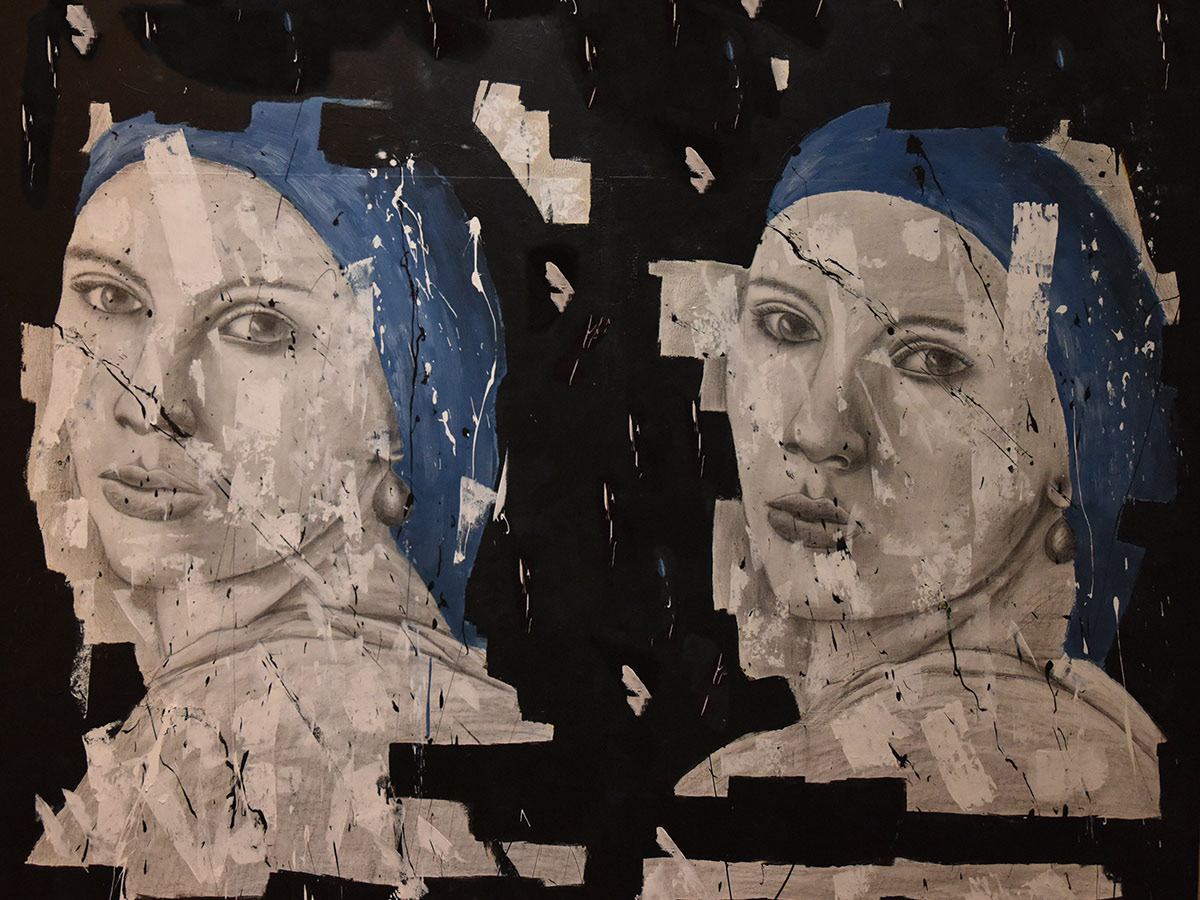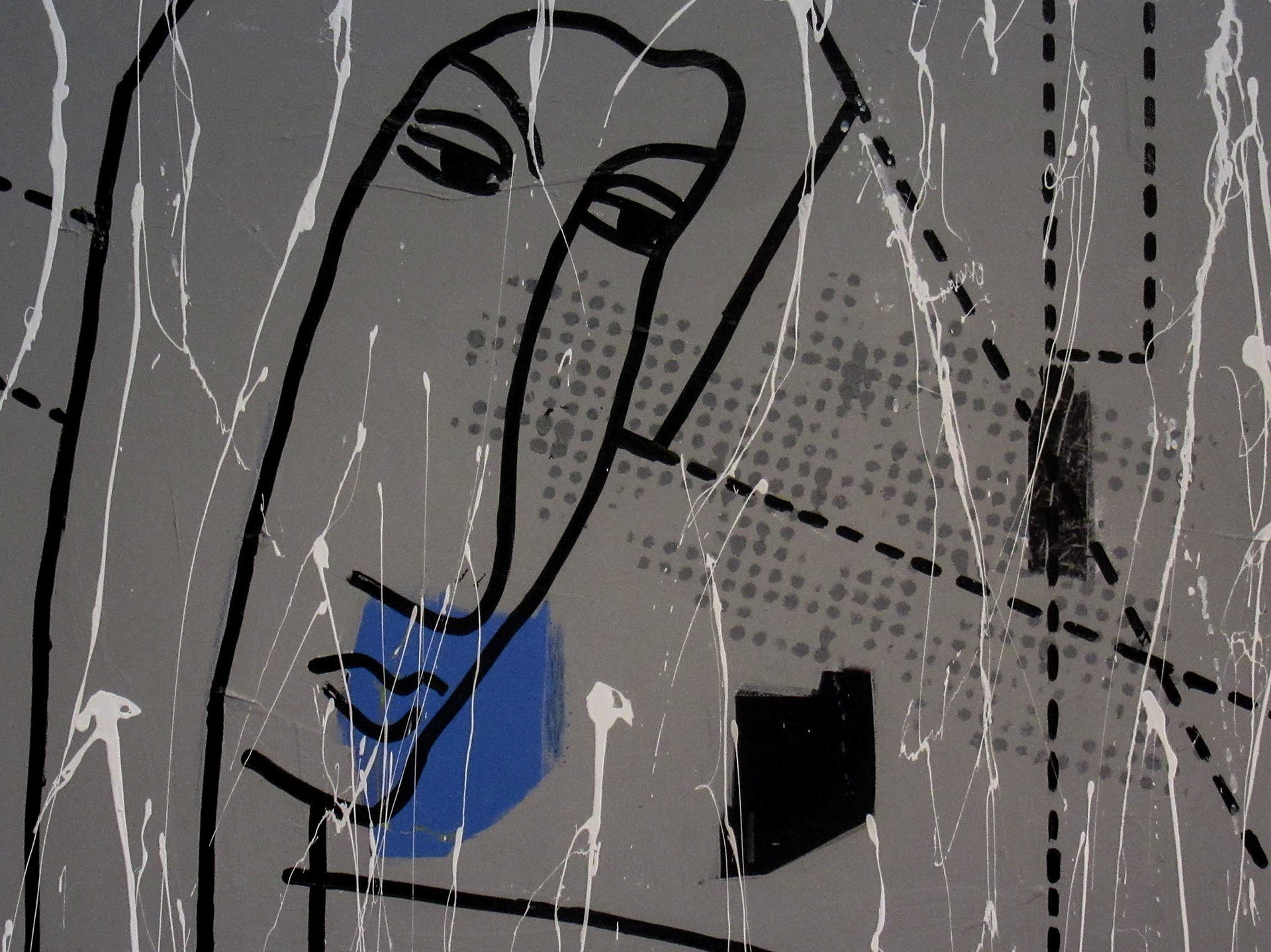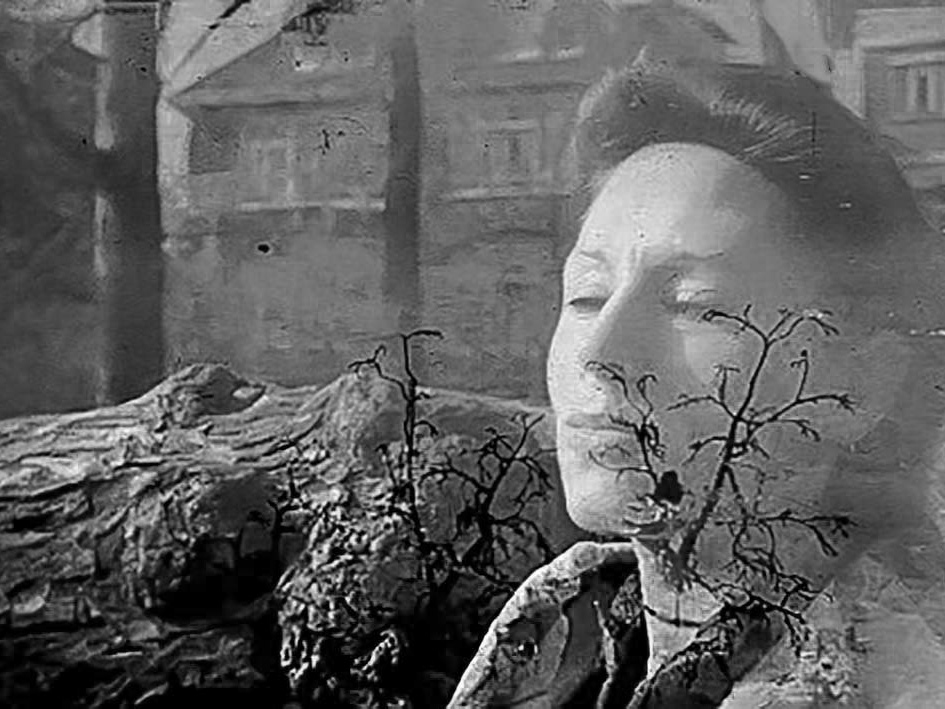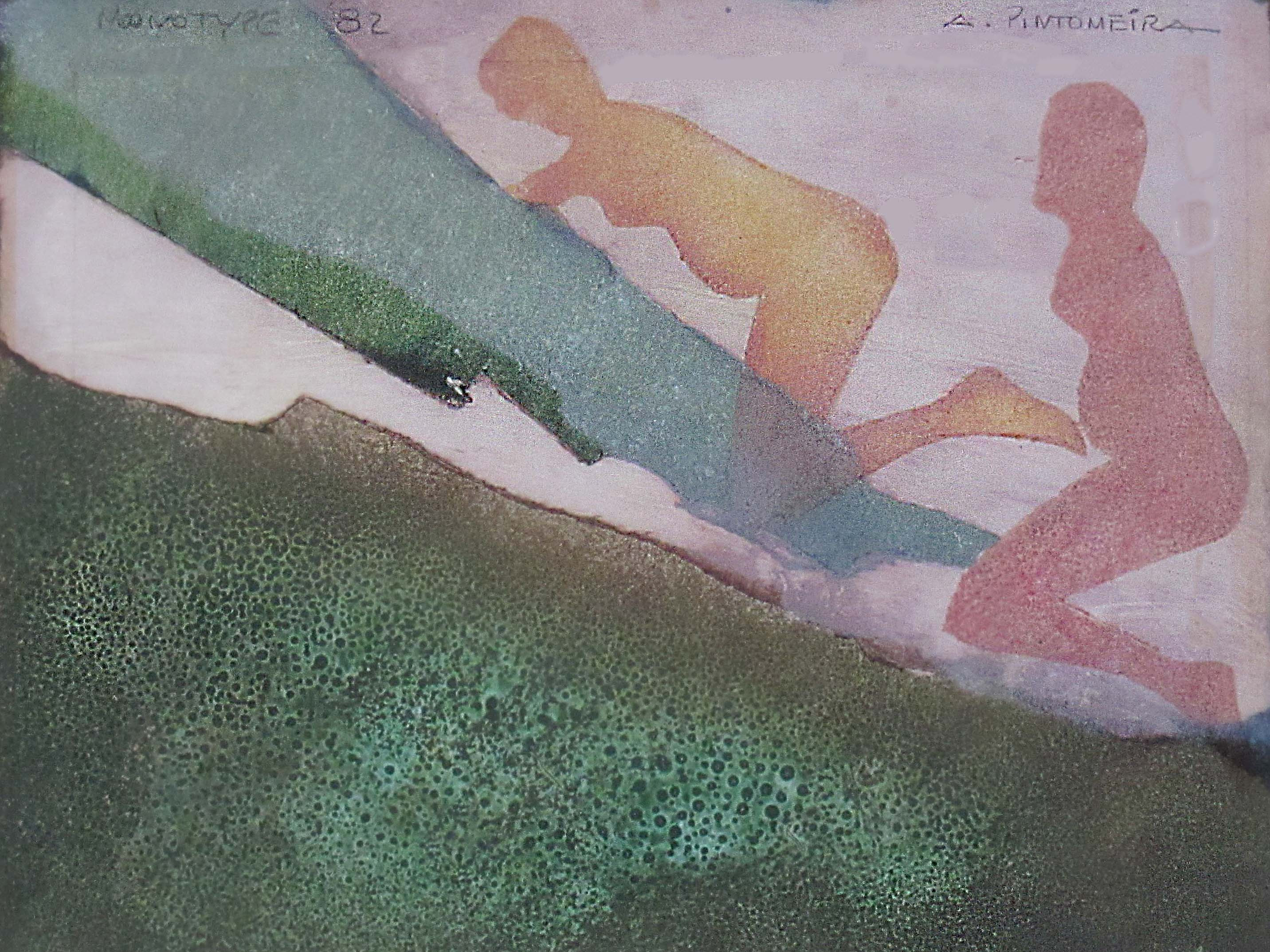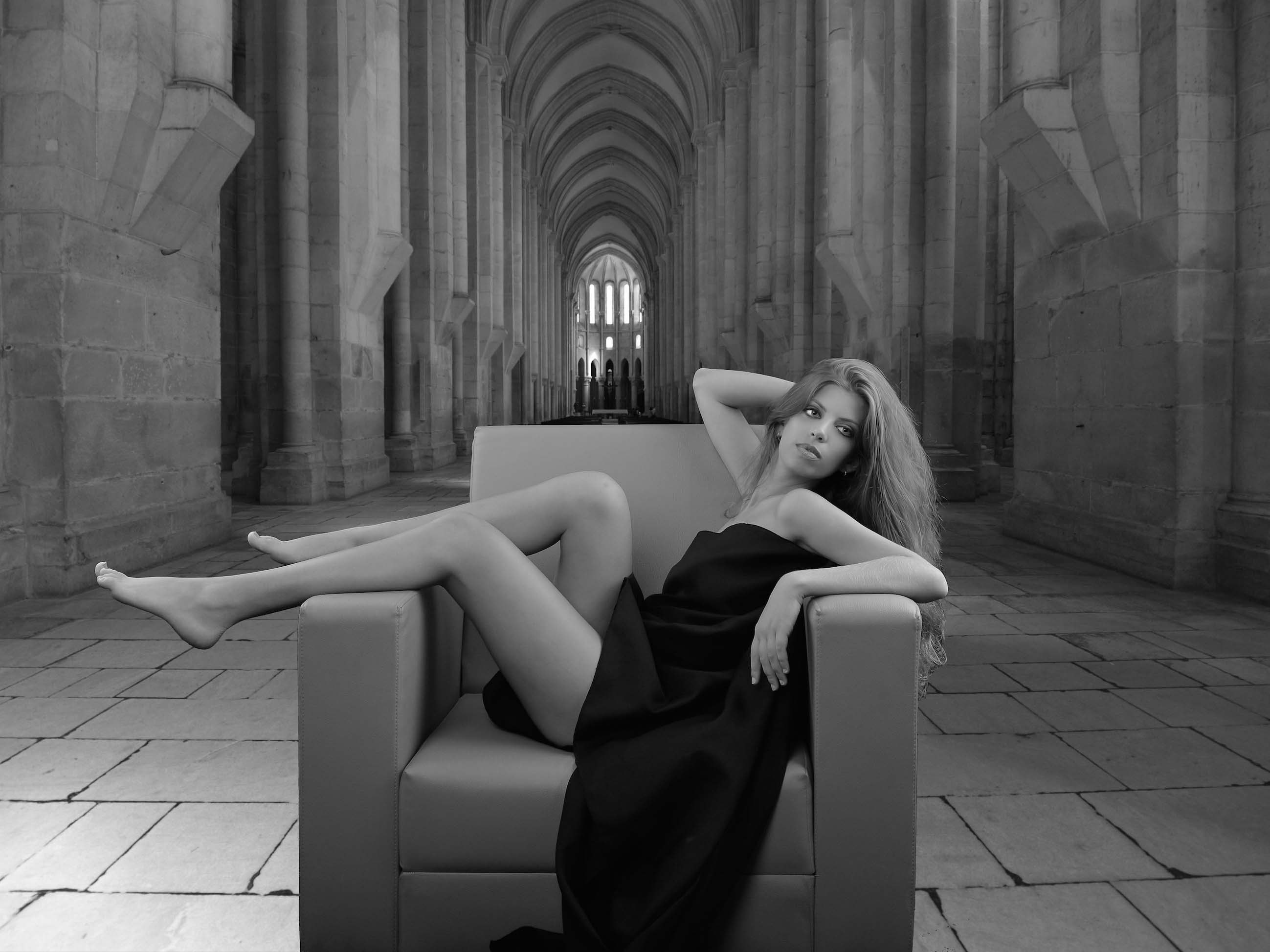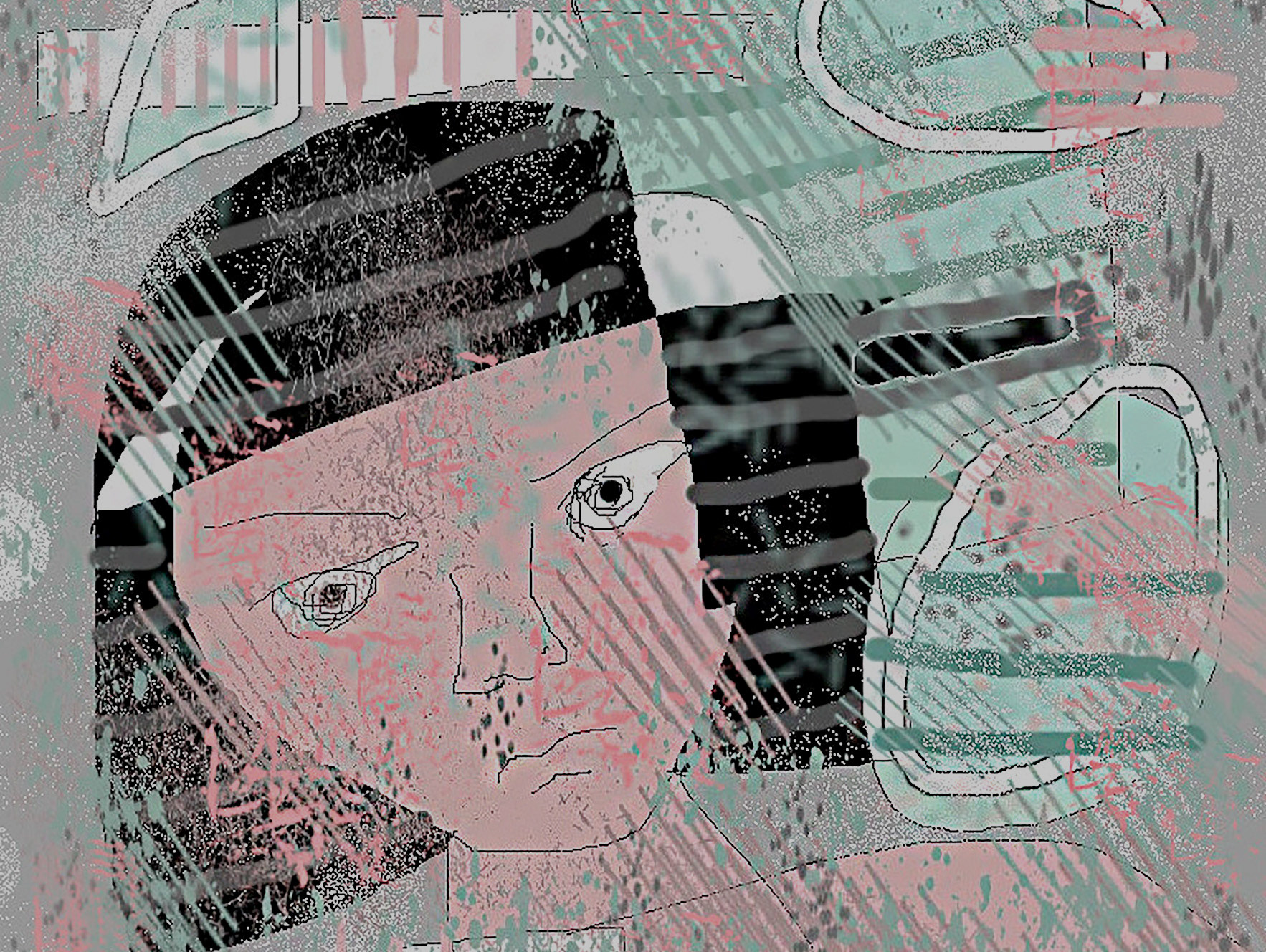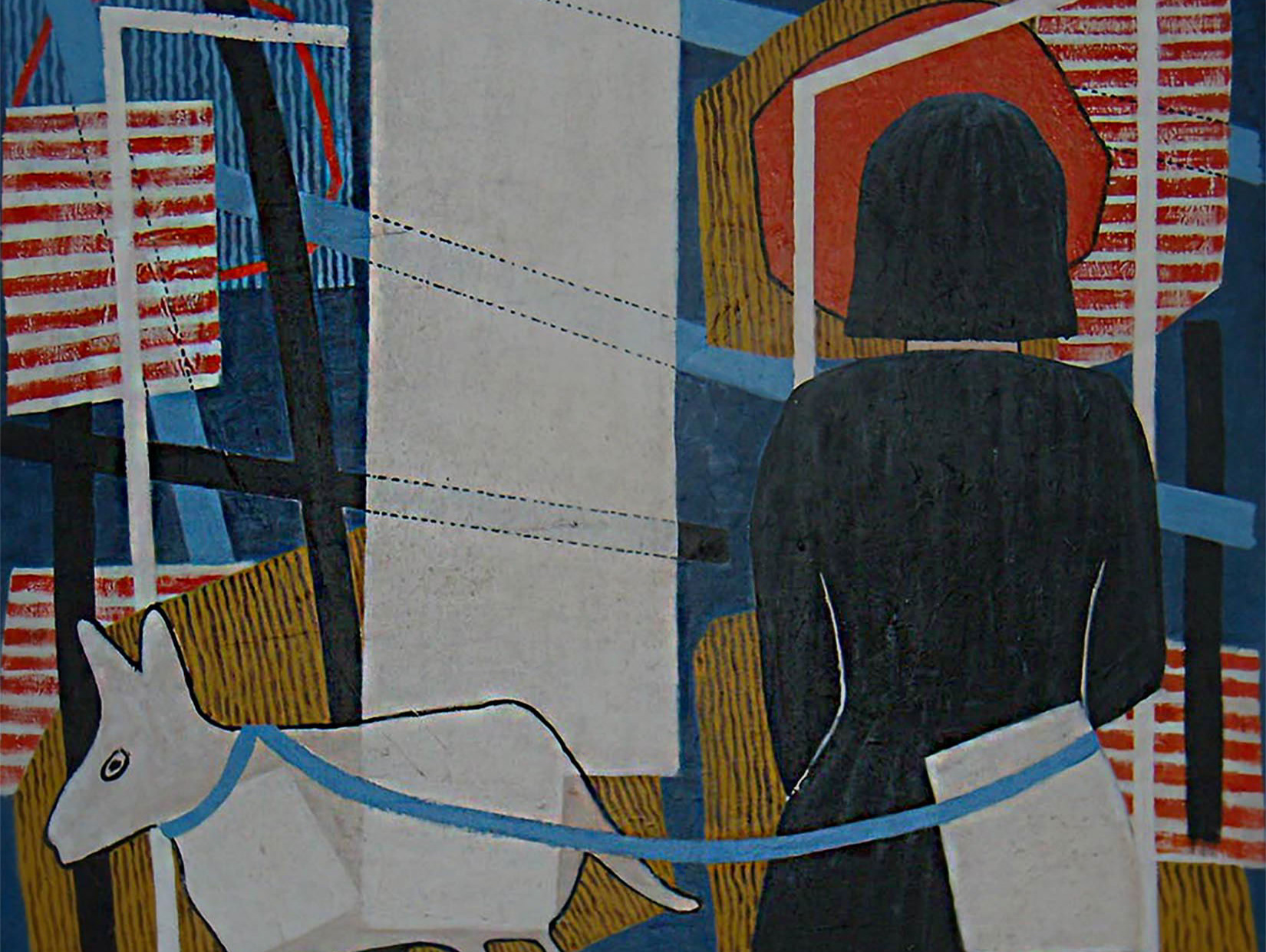INTERIORS
2008 . 2010
The concept of the composition and the shape suggests theatrical staging where the characters are presented as mute and immobile figures, ones sitting in couches or chairs, others standing. The living room, here, seems simulating a stage, filled with chairs, couches, light stands, carpets, vases, etc. Other elements, recurrently used by the artist for the formal composition’s equilibrium, fill the artwork’s spaces: lines, thick and dense strokes, linear streaks or others geometric shapes.
The space where everything happens could be any house living room. And what happens? It seems that nothing is happening, even though hovers in the air the expectation of something that could eventually happen.
The space where everything happens could be any house living room. And what happens? It seems that nothing is happening, even though hovers in the air the expectation of something that could eventually happen.
INTERIORS | acrylic on canvas | 140x160x4cm | 2011 | Private Collection
INTERIORS | acrylic on canvas | 140x160x4cm | 2011 | Private Collection
INTERIORS | acrylic on canvas | 140x160x4cm | 2011
INTERIORS | acrylic on canvas | 140x160x4cm | 2011 | Private Collection
INTERIORS | acrylic on canvas | 140x160x4cm | 2011 | Private Collection
INTERIORS | acrylic on canvas | 140x160x4cm | 2011 | Private Collection
INTERIORS | acrylic on canvas | 140x160x4cm | 2011 | PrivateCollection
INTERIORS | acrylic on canvas | 140x160x4cm | 2011 | Private Collection
INTERIORS | acrylic on canvas | 140x160x4cm | 2011
INTERIORS | acrylic on canvas | 140x160x4cm | 2011 | Private Collection
INTERIORS | acrylic on canvas | 140x160x4cm | 2011
INTERIORS | acrylic on canvas | 140x160x4cm | 2011
INTERIORS | acrylic on canvas | 140x160x4cm | 2011
INTERIORS | acrylic on canvas | 185x165x4cm | 2011
INTERIORS | acrylic on canvas | 160x140x4cm | 2011 | Private Collection
INTERIORS | acrylic on canvas | 160x140x4cm | 2011
INTERIORS | acrylic on canvas | 160x140x4cm | 2011
NTERIORS | acrylic on canvas | 160x140x4cm | 2011 | Public Collection
NTERIORS | acrylic on canvas | 160x140x4cm | 2011
NTERIORS | acrylic on canvas | 140x160x4cm | 2011 | PrivateCollection
Figures and objects on stage
Moisés de Lemos Martins
Sociologist | Writer | Professor at the University of Minho
Walter Benjamin was the first to realize, in the thirties (1930), that artwork would lose its unique and unrepeatable original aura. The artwork did not contain anymore the source of a thesaurus signification. The recent cultural industries of cinema and photography came to printing from images, the profane character of shapes, technically reproduced, imposing to them a commercial circuit, approaching the visual arts from the performing arts, turning them into mass communication.
The visual arts follow the same path: In it remains a carnal and organic link, vital, but his spirit is no longer essentialist, nor elitist, and is shaped by this profane culture, which is supported by the new technologies of image manipulation. Instead of looking for a universal aesthetic, art now roams through the convulsions of modern experience, pairing with the mass communication and staging the world of everyday objects, reusing the techniques of photography, advertising and graphic design.
Pintomeira expresses this movement. Surrealist since the late ' 60s, but especially in the 70s, made after a multifaceted development, dominated by the influences of the Group CoBrA (juxtaposition of the initial letters of the cities of Copenhagen, Brussels and Amsterdam), and also the figurative experimentalism around the contour, he came, progressively and already in this century, next to Pop Art, being today an important figure in this context.
Through his brushstrokes, painting becomes a profane art, which multiplies the links with photography, and suggests the painting posters, collages for advertisements, the drawings of advertising products, not being anymore the stronghold aspect of a codified essence by the artist’s representation, nor an activity for the consumption of an elite. In Pintomeira paintings, it is not only the figurative aesthetic that allows the artist to communicate with the general public. Through a calculated and thorough practice of advertising techniques and graphic design, never like today, also, did he resume in his artworks the daily life of mass culture, in clear challenge to the hermetic modern art of the abstractionism.
Having started in 2000 the “New Line,” we began then to notice the influences of Pop Art and Graphic Design. Pintomeira affiliates himself - more and more in these aesthetic currents, under the influence of the British David Hockney and the American Tom Wesselmann. The theme “Interiors” is to be inscribed in this last phase of the artist.
We noticed in “Interiors” that it is not only humans who have a moment of splendour, an "eternal instant". The objects also have, either as prototypes, with the “griffe” as a trade mark, or as models on the catwalk, or as mannequins in the showcase, often "bodies without organs", according to the expression of Antonin Artaud, bodies without mouth, nose and eyes, but always with skin, eroticized bodies, with sex appeal, stylized bodies in graphic silhouettes, constituting a kind of fusion between the human and the inhuman.
This splendour of the objects exists today in Pintomeira paintings, poetic that enlists the human where it cannot be inserted. Their system of objects makes us think of an “autopoiesis,” which acts in the world as an autonomous unit that auto-creates itself.
The composition of “Interiors” is minimal. The colours are strong, contrasting, and tend to be primary (black and white as neutral colours; besides, red, blue and, instead of primary yellow, ochre). The spaces are always presented in simplified notes, without big investment in the game of shadows and with almost geometric shapes, where only the human figure is not represented in straight lines as the objects. Pintomeira traces the main component parts introducing small drawing plots, sometimes dotted, or striped, other times straight or circular, in order to define sharper a window, a curtain, a lamp, a carpet, or even the human figure. His capacity of synthesis stands out, in the views of the exterior, which are, in fact rare, in this phase of the artist. The human figure gives, almost always, only, the scale of the drawing, which by rule is drastically reduced to the outline. Often represented in black and white, but also the black and blue, ochre, and sometimes we can see a blue tie, a shoes design, the cut of the jacket flaps, and the “rouge” of the lips. The pose is the most common situation: sitting, with his hand on the arm of the couch and crossed-legs, in the case of a female figure, the hands are together side by side, fingers extended and hanging on his knees, in the case of a male figure; arms crossed; hands in his pockets, with one hand on the hip and another in his hair; in front of a door, with a cell phone next to his hear. Suggesting the pose of a model on the catwalk, or a mannequin in a showcase, when it is not represented as an image on a painting, in the case of a portrait, the human figure seems sometimes a photographic model in a studio scenario, or a cinematographic character. The combination of the human figure, both as defined shapes of an object or as undefined shapes, apparently flat, without volume, creates a dramatic tension claiming the spectator’s attention.
In this system of objects stands out the stage, the screen and the mise en scene. The staging of a vase, a wastepaper basket, a cloakroom, a lamp suspended from the ceiling, or from another ornament with “griffe” - we're talking about designer pieces. The staging of the carpeted spaces, commercial storefronts or aseptic, of the commercial showcases or of the sales office – we’re talking about spaces equipped in order to constitute themselves art installations.
The staging of a woman’s face side-view, sitting at a table, lonely, looking thoughtful in front of an empty table, in a grey coloured atmosphere, suggesting a picture, or an image of a mise en scene
The painting of a nude female bust, seen from the back, in which, however, a slight twist of the shoulders and of the head allows to make the face visible.
The picture, horizontally striped, grayscale, on which is painted in black a huge digit seven, also exposing, in a closer plan, a woman’s face, presenting us multiple suggestions: of catwalk show, photographic posing, cinematographic character, a staged mannequin.
The picture, horizontally striped, in shades of pink, with a woman’s figure, dressed in black, also horizontally striped, suggests that the human figure is the catwalk of herself.
The staging of a woman’s bust, facing forward, with a distant and slightly oblique look, suggests a portrait, which can however be imagined as a sculpture. The staging of a woman’s figure seated, in forward position, with her hands on her face and shoulders supported by the table top, features a female figure in serene pose, despite its total enclosure, with no horizon accentuated by a closed window on her back, by the books merely decorative, also closed on the table top, by the empty jar of flowers, in a way, also closed by their uselessness, and by drawing dotted straight and curved lines dramatizing the claustrophobic nature of the place. Serenity, given the fact that the simplicity of the objects brings dynamic and intimate comfort to human life.
The staging of a cell phone, which is an instrument – a consumer’s society fetish. The staging of chairs and sofas, and a woman's shoe, displayed like design pieces, as prototypes of a trademark.
This system of objects, represented on stage and appearing in a colourful show, as elements of a complex game of dashed lines and contrasts, suggests the non-places of the current consumer’s society, anonymous places, places of passage, reverberant places of colour and light, which are moments of aesthetic emotion, whose drama is accentuated by the theatrical composition of models, mannequins or characters. There are hybrid aspects in the silhouettes figuring bodies, half photographs, half prototypes, half mannequins, half characters, half sculptures. On the other hand, in the case of eroticized objects, you could say “bio technologized,” these bodies produce in us feelings and emotions, like touching our skin. We are, of course, on this side of the stage, but we are also facing the spectacle of the objects, ending by considering ourselves also hybrids, made from an amalgam that imbricates us with them.
We can say that hybrid is, furthermore, the composition of spaces. The surprising curtain, suspended on the wall, the rigor of the object’s contours, the detailed design of the iron railing in the window, the accuracy of the figurative objects and bodies that furnish the space, are combined with the unusual contrast of unusual spots of primary colours that seem to be borne by themselves, the recurrent and enigmatic design of the digit seven (sort of a reminiscence of the Judeo-Christian wisdom, or then, of the cabalistic key on the entry’s door of, god knows, what worlds), the irregular dotted straight line that intersects an ovulate one, suggesting a dream of a paper kite, and finally the unused but protruding outline on the wall of an detailed stripped cloth.
Finally, are hybrids, these spaces where its interior’s view, allows to divide, equally its exterior, as a world of life, figured out there, after opening an intermediate space of a robust iron railing, located on the outside of an opened window, that both separates and brings closer the two spaces. In fact, contrasting with the world of the objects in the interior, is figured in the exterior the foliage of a palm tree that rises into a blue horizon, and is also figured the sudden of a “naïf” bird, in "free freedom" of blue flight.
In “Interiors,” however, these spaces that articulate the interior with the exterior, are few. In this aesthetical phase, marked by the Pop Art and by the Graphic Design, Pintomeira describes, in general, places enclosed in themselves, without vanishing lines or horizon. This procedure obeys to the principles of Minimalist Art. By favouring the exhibit space, the artist creates a work that lies between painting, sculpture and architecture. This space, simultaneously continuous and discontinuous, is based on the autonomy of the interior world and doesn't seem to conceive any exterior. But it's not inconceivable that this landscape could also be perceived from the outside, while the interior would necessarily be hidden by the façade.
Perhaps the most surprising aspect of the graphic composition of “Interiors” is the set of curved lines, folded, that intersect straight lines. Between the curved lines, is given to the number seven an important place. The curved line, folded, constitutes, according to the Leibnitz Baroque philosophy, the possibility of understanding the universe that surrounds us and the principle that organizes forces, according to multiple point of views. The fold goes to infinity, and can only be seized by a series whose number is itself infinite. The number seven is in “Interiors” the serial number. According to the Judeo-Christian resonance, the number seven is a fold consisting of an inflection point, or of inclusion over a straight line, to make place for a curve. The curve in which consists the number seven is in Pintomeira artwork an ode to the subject, which no one can seize in its entirety.
In conclusion, we can say that in this poetic artistic composition, that is “Interiors,” Pintomeira isolates the minimum units of the composition, trying to get as close as he can to the life forms contained in the staging of the objects. Today, not questioning himself, about the origin of life, nor about the way she emerges, Pintomeira presents in “Interiors” the tensions that allows him to remain consistent with his artistic route, gathering, at the same time, the conditions for a possibility of his own metamorphosis for new mutations and hybridisation.
